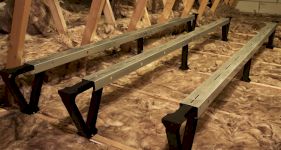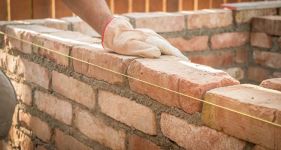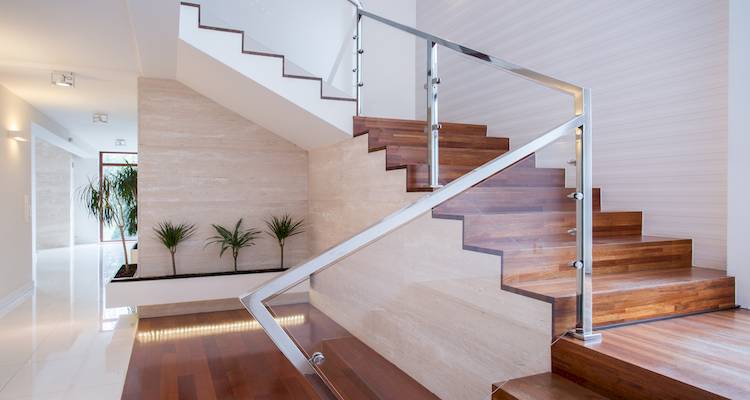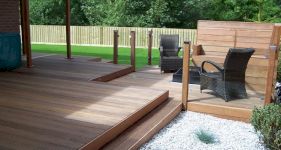Woodworm Treatment Cost
- The average cost of woodworm treatment is around £750
- The job will take approximately 1 to 3 days to complete
- A complete pricing breakdown which includes cost factors to consider, the types of woodworm, along with what such a task usually involves
- How long the job should approximately take and a general overview of what kind of jobs can be performed
- How to find and hire a professional woodworm specialist
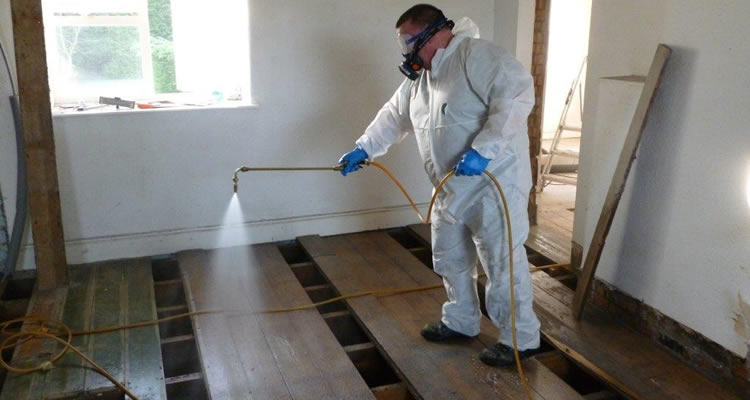
£750
Table of Contents
- How Much Does It Cost To Treat Woodworm?
- Woodworm Treatment Price List (2025)
- Woodworm Treatment Supply Costs
- Additional Woodworm Treatment Costs
- Labour Cost of Woodworm Treatment & Timescales
- Factors That Impact Woodworm Treatment Costs
- What's Involved in Woodworm Treatment?
- Types of Woodworm
- Types of Woodworm Treatment Costs
- Checklist: Hiring a Woodworm Treatment Specialist
How Much Does It Cost To Treat Woodworm?
Woodworms can wreak havoc to your home. They will eat away at wood fixtures, furniture, and pricey wooden beams, which will end up costing far more to replace in the long run.
If however, you properly pinpoint and set up a target-treatment plan, you can rid your home of woodworms in a matter of days. And, if you opt to hire a qualified professional, they can offer you various treatment methods to target the problem.
Woodworms can lead to other forms of infestation in the home; and, even if it doesn’t, these larvae can cause quite a bit of damage to wooden furniture and fixtures, and end up costing you thousands in treatment costs.
So, let’s take a look at the general costs and the reasons why it is best to hire a professional at first sight of infestation, rather than attempt to rid the infestation problem yourself.
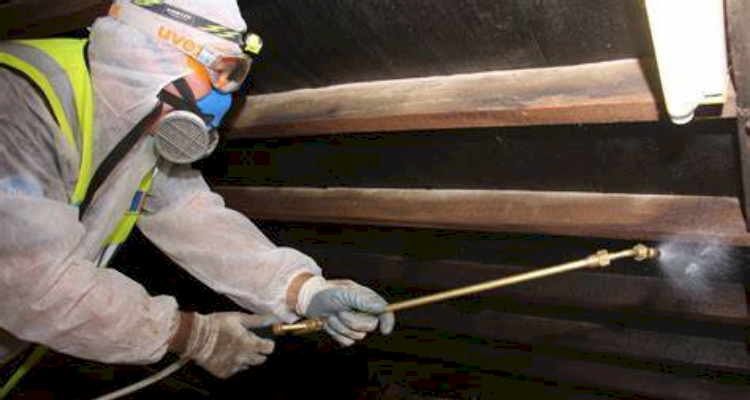
The average cost of treating woodworm will vary depending on the type of treatment required. For instance, a simple boron treatment normally costs from £15 to £42, while a fumigation or fogging treatment is typically priced anywhere from £500 to £1,000.
You may also need to pay an additional charge for an inspection with a woodworm survey cost starting from £80 up to £250.
These costs will vary depending on the extent of the damage and the size of the space, as well as the type of woodworm as some are harder to get rid of than others.
It's best to tackle this issue as early as possible. Don’t wait until it spreads — getting a survey and quote early usually works out much cheaper than delaying.
Submit a few basic details and we'll connect you with woodworm treatment specialists near you. Quotes you get through MyJobQuote are free, with no obligation to proceed.
Which woodworm treatment is best? Is a brush on or spray woodworm treatment better to use?
Woodworm Treatment Price List (2025)
To help you understand the cost of woodworm treatment, here is a woodworm treatment price breakdown of the different treatment types for different-sized spaces.
Boron Treatment Cost
| Area Size | Average Cost |
|---|---|
| 15m² | £15–£18 |
| 25m² | £25–£30 |
| 35m² | £35–£42 |
Woodworm Survey Cost
| Property Size | Average Cost |
|---|---|
| Small (15m²) | £80–£130 |
| Medium (25m²) | £140–£190 |
| Large (35m²) | £200–£250 |
Woodworm Fumigation Cost
| Area Size | Average Cost |
|---|---|
| 15m² | £500–£600 |
| 25m² | £700–£800 |
| 35m² | £900–£1,000 |
Woodworm Treatment Supply Costs
If you would prefer to save on labour costs with a DIY woodworm treatment, you'll need to consider the following supply costs:
| Product Type | Supply Cost |
|---|---|
| Wood treatment | £5-£7 per litre |
| Woodworm killer | £2-£4 per litre |
| Boron powder | £18-£20 per kg |
| Boron paste | £13-£15 per tube |
Additional Woodworm Treatment Costs
Repairing Replacing Joists & Floorboards
If the woodworm has affected the condition of your joists or floorboards, then you'll need to ask a carpenter to take a look at them.
Most floorboard repair and replacement jobs cost between £200 and £800. In this case though, you should expect quotes to sit towards the higher end of this range.
Restoring Wooden Flooring
After solving your woodworm issue, you may need to consider hiring a professional to restore your wooden floor to its former glory.
Wooden floor restoration costs vary depending on what exactly is required.
For instance:
- Staining a wooden floor doesn't typically cost more than £6 per square metre
- Floor sanding and refinishing typically costs around £25 per square metre.
If you have had your stairs treated with a woodworm solution, then you may also need to pay for stair sanding. If you hire a tradesperson for this job, it'll typically cost £35 per square metre.
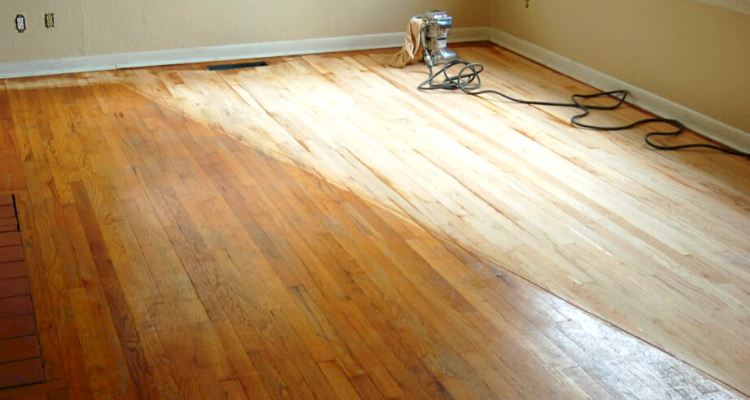
Rising Damp Treatment
Woodworm is more common in damp areas. So once the woodworm treatment has been completed, it's recommended to deal with the source of the issue. This may involve hiring a professional to treat rising damp.
Costs range widely depending on the extent of the problem. You should expect quotes to be between £500 and £2,000 to inject a damp proof course into one wall and up to £900 to £4,750 if you need to treat all the walls of your home.
You may also want to install a damp proof membrane, which typically costs around £125 per square metre.
Labour Cost of Woodworm Treatment & Timescales
The labour cost for hiring a professional to treat your woodworm issue will vary depending on the extent of the damage and what the job involves. For an initial woodworm survey, you should expect to pay anywhere from £100 to £250 per hour.
The overall labour cost will vary depending on the size of the home, as a small terraced property may only take one hour to survey while a large detached home could take up to four hours.

Tradesmen’s costs also vary depending on the treatment required, with most professionals charging around £30 for an average of 25 square metres which can take anywhere from one hour to two days.
In comparison, more extensive jobs such as fogging or fumigation cost anywhere from £500 to £1000 for a one to three-day job.
Factors That Impact Woodworm Treatment Costs
To help you determine the price for woodworm treatment, think about the following cost factors:
- Where you live — Woodworm is incredibly common, with House Longhorn being more common in the South East. In London and the South East, you'll pay about 10–20% more than anywhere else.
- Access — Treating lofts and roof beams costs more than ground-floor rooms. If you need full woodworm fumigation, you may have to move out for a few days. Some companies cover hotel costs, some don’t.
- Type of woodworm — A common furniture beetle is cheaper to deal with. Tougher pests like house longhorn often need full woodworm treatment with fumigation, which costs a bit more.
- Treatment type — A basic woodworm survey cost is between £80–£250. Boron sprays or gels are cheaper at £15–£42. Fumigation is the expensive one at £500–£1,000+, but it is only used in bad cases.
- Damage — If the beetles have spread, you may also need repairs to joists or floors. In the worst cases, with damp or rot, bills can run to £4,750 or more.
- Guarantees — Some firms give 10–30-year guarantees. Longer cover and call-backs usually mean higher prices.
What's Involved in Woodworm Treatment?
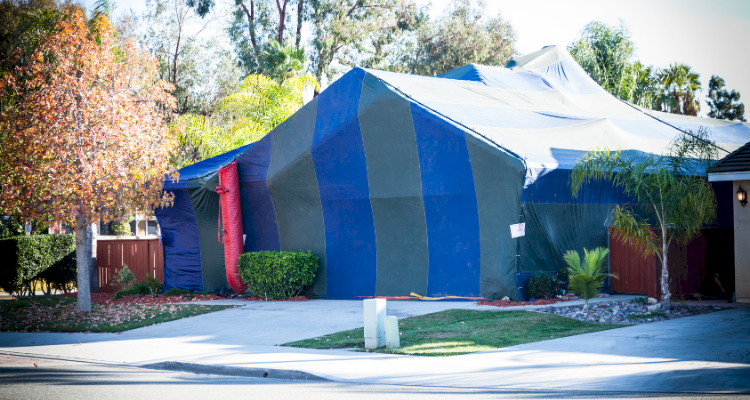
Woodworm fumigation should only be done by qualified professionals, as the job involves using gases that aren’t safe to handle. Even the simpler gels and sprays work best when they’re applied the right way.
DIY is risky. A job carried out by a professional is safer, swifter and mostly comes with a guarantee. You can request several quotes from woodworm treatment specialists near you, using MyJobQuote. It's fast, free, and there is no obligation to go ahead.
The first step for all treatments involves conducting a woodworm survey to determine the type of woodworm and which treatment is required. They will also investigate whether the infestation is active while examining the extent of the damage.
Each woodworm treatment involves various processes, including:
Boron Treatment
- Holes Drilled — They will apply a Boron paste to the infestation area, which will involve drilling holes into the timber of around 10mm in diameter.
- Extension Tube Fitted — They will then fit an extension tube before injecting the Boron paste into the holes to make sure they are completely full.
- Holes are Sealed — They will then place a timber dowel on each hole to cap off the entry.
- Gel Applied — Once the paste has dried completely, a boron-based gel will then be applied to the affected surface, making sure that there is at least 300mm of gel around the attacked area.
Fumigation Treatment
- Evacuated for Safety — If you have a severe infestation, then a professional may advise that you move out of your home to allow them to fumigate the infested area. Fumigants can be harmful.
- Gas is Released — Once the property is clear and the home is sealed off, they will release fumigant gas throughout the house to kill off the woodworm infestation in your home.
- Waiting Time — You will then be required to wait at least several hours or sometimes a few days before it is safe to move back into your home. A lot of companies offer accommodation rates within their price.
Fogging Treatment
If moving out of your home for longer than a day is not possible then you may want to hire pest control experts to exterminate your woodworm issue with a fogging treatment.
- Fogging Solution Spread — Fogging treatments involve the use of a fog machine which spreads an insecticidal mist around the space in the form of a fogging solution.
- Waiting Time — This will require you to stay out of your home for around two to four hours, as the process can be harmful, although not as hazardous as fumigation.
Types of Woodworm
There are various types of woodworm which require different types of treatments, so to help you make the right decision, take a look at the below woodworm guide.
Common Furniture Beetle
- How to spot? Tiny, light brown beetles. Look out for fine sandy dust and pin-sized holes (about 2mm wide) in your wood.
- Where does it spread? In old furniture but, if left, can effortlessly move into floorboards, joists and timber in walls.
- Why is it a pain? It won’t obliterate everything overnight, but untreated it can spread far and weaken timber over time.
- How to fix it? A boron spray or brush-on treatment is a good bet, plus, it’s a little cheaper.
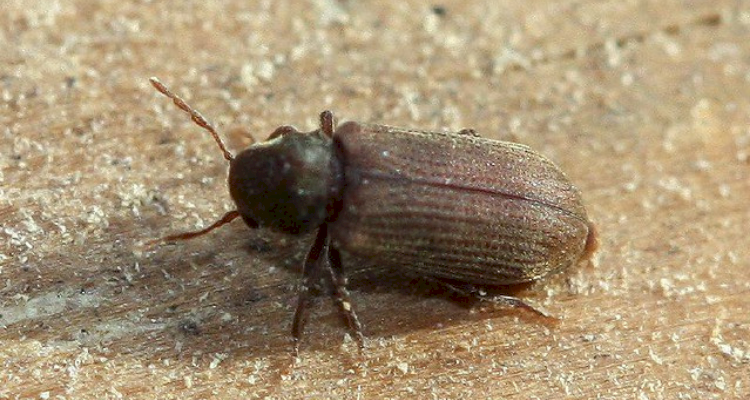
House Longhorn Beetle
The House longhorn beetle is a large insect which can be identified by its dark brown colouring, white hairs and long antennae. As it is larger than other woodworm species, they tend to create large holes, up to 10mm in diameter, which tend to break the surface of wooden fixtures.
This type of woodworm prefers young softwoods, and they fly from place to place finding fresh wood to lay their eggs while filling the holes with their frass.
House longhorn beetles are a lot harder to remove than other woodworm types, so you may need to hire a professional to perform fumigation or fogging treatment.
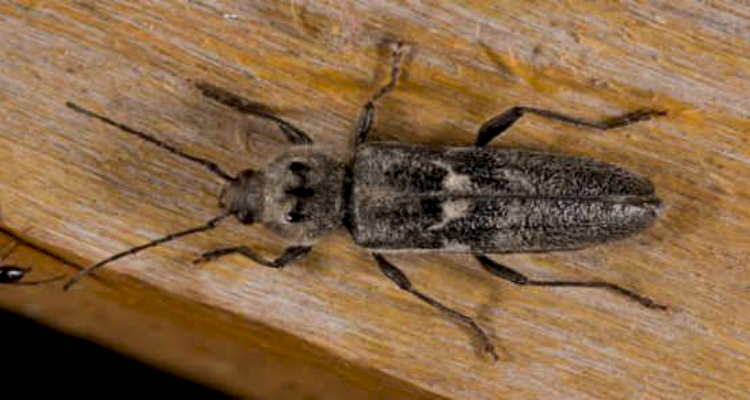
Powderpost Beetle
Powderpost beetles are a type of wood-boring insect which have a slender appearance with red or black colouring. The larvae they produce is typically white or cream and can be recognised by its c-shape.
This type of woodworm is typically attracted to hardwoods with wide pores such as ash, walnut and sycamore. They bore holes into furniture and other wood fixtures and emerge from holes that measure 1 to 2mm – leaving white powder in their trail.
To get rid of powderpost beetles, you may want to hire someone to apply a boron treatment to the surface along with furniture removal to get rid of any infested or rotted wood.
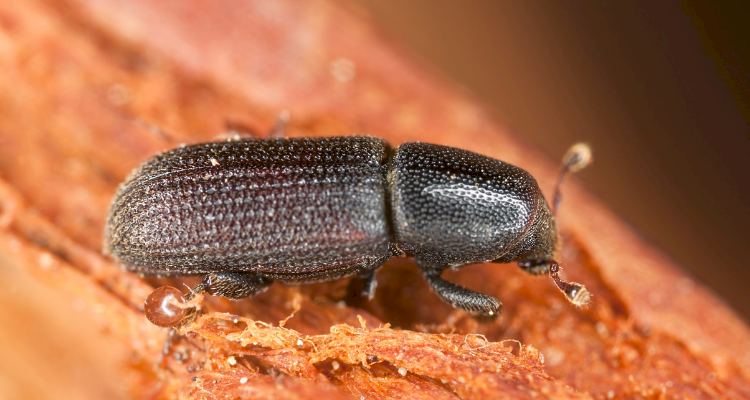
Deathwatch Beetle
Deathwatch beetles have a bee-like and furry appearance with its dark and light brown colouring. They can also be identified by their distinctive clock-like ticking, which they use to attract mates.
This woodworm species is normally attracted to hardwoods such as elm and oak, which are often already affected by white rot. They also create borehole tunnels that measure around 3mm in width, which are typically packed full of frass, so you will notice the problem immediately.
To get rid of deathwatch beetles, professionals tend to use an injection method with chemicals such as boron or permethrin to extinguish the infestation.
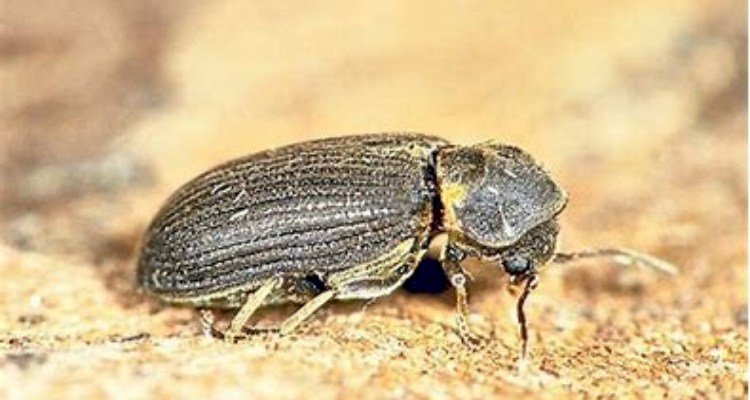
Types of Woodworm Treatment Costs
Woodworms might seem easy to remove/fumigate from your home. However, the wrong treatment method can do far more harm than good. Further, if you don’t use the right chemical compounds, treatment solutions, and don’t go in the proper order when treating the woodworms, further infestation can occur down the road.
So to help you avoid any of these issues, take a look at some of the best woodworm treatments.
Boron Treatment Cost
Boron is a mineral that is typically found in the environment as well as many woodworm-removing chemicals which are generally water-based. For a boron powder, you should expect to pay around £18 to £20 per kg, while a boron paste costs £13 to £15 per tube.
Boron treatments are typically applied or injected into wood surfaces to eradicate most woodworm species safely. This type of treatment is a great choice for small infestation issues as it features relatively low mammalian toxicity when used correctly.
They also leave no smell; you don’t have to worry about a lingering odour in your home.
If applying boron treatment as a DIY project, you need to be careful about using too much boron, especially if you are pregnant or have children as it can cause you to feel sick or have headaches when exposed to large quantities.
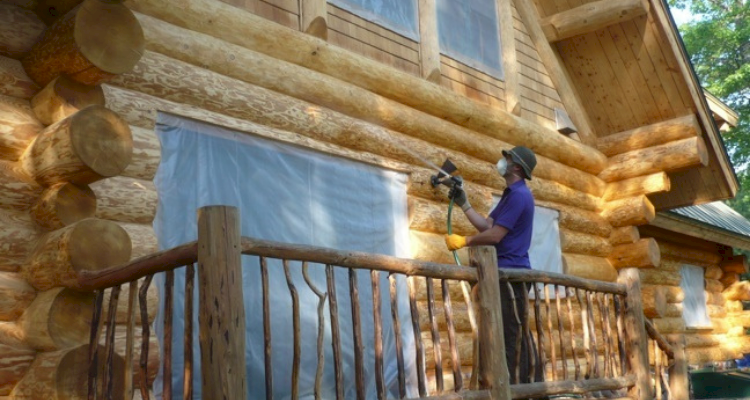
Fumigation Cost
Professional woodworm fumigation involves evacuating and sealing a property to spray gas around the home. This is not advised for DIY use, as only expert fumigators can conduct this type of treatment.
The main benefit of fumigation is that the fumes will reach every part of your home to eradicate a woodworm infestation which may have spread. This will also remove any other unwanted pests which may not have been picked up on, making your home a safer and more protected environment.
The issue with fumigation is that you will have to leave the home for several days, to prevent breathing conditions or possible respiratory problems later down the road.
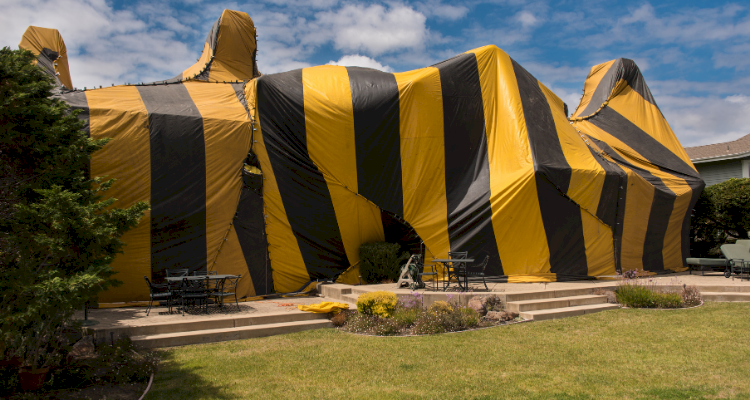
Fogging Cost
A woodworm fogging treatment usually involves a fogger machine which fills a contained area with an insecticidal mist to exterminate the woodworm infestation. You can hire a professional to do this or purchase your own kit which typically costs around £220.
One of the best advantages of choosing a fogging treatment is that it can be carried out in a targeted area, unlike fumigation, which typically requires the whole property to be sealed. This means it is usually quicker, but you still need to leave the area during treatment and ventilate afterwards, so you can go back to your house in around 2 to 4 hours.
Fogging may not be the best option if the infestation is widespread, as unlike fumigation, it does not reach every corner of your home as it does in an open space.

Checklist: Hiring a Woodworm Treatment Specialist
Before hiring a professional woodworm specialist, you should take a look at the following checklist:
- Do they have knowledge in all treatment methods? Choose a specialist who knows boron, water-based, fumigation equipment, chemical agents, and other treatment options.
- Are they qualified? If you require a fumigation treatment, check they hold an RSPH Level 3 Safe Use of Fumigants for the Management of Invertebrate Pests Units 1 or a BPCA Fumigation Diploma and relevant BPCA module certificate for the areas you intend to fumigate.
- How much experience do they have? Make sure they have lots of experience treating woodworm and are familiar with all forms of infestation (house longhorn beetle, furniture beetle, etc.).
- Are they experienced? Look for public liability insurance and employer’s liability insurance to protect you against any incidents during the treatment.
- Do they offer any guarantees? Check what their guarantee covers, for how long, and if they fix any issues that arise.
- Have you been given an itemised quote? Ask for a breakdown of the prices involved so there are no hidden surprises.
- Do they have positive reviews? Check their MyJobQuote profile to read feedback from other homeowners.
FAQs
How Does Woodworm Spread?
What Is Woodworm?
What Does Woodworm Damage Look Like?
It’s most common to notice activity between May and September when the beetles are more active.



